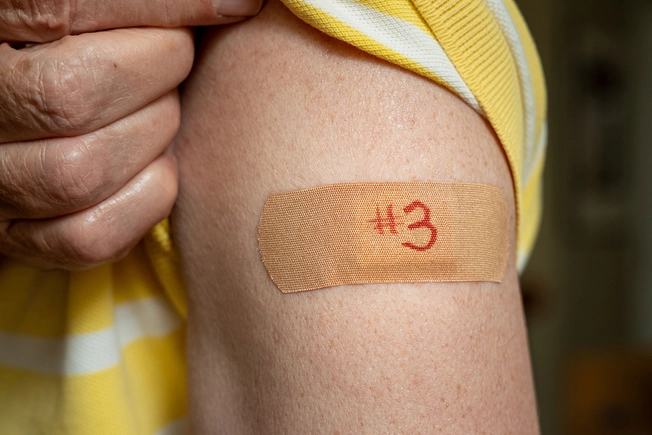How mRNA Technology Works


Where You’ve Seen mRNA Technology at Work
The vaccines made by Pfizer-BioNTech and Moderna use mRNA to fight COVID-19. When these vaccines were rolled out, it was the first time mRNA was used on humans in vaccine technology. While the concept is new to the public, the research has been around since the early 1990s.

What are mRNA Vaccines?
mRNA is a type of molecule that has the ability to deliver a specific set of instructions to your cells to make pieces of protein used by certain viruses. This could induce an immune response to fight off a viral attack.
Harnessing this technology, scientists had been experimenting with mRNA’s potential use against deadly diseases like influenza, Ebola, and SARS.

mRNA Vaccines vs. Traditional Vaccines
Traditional vaccines use weakened or inactivated germs to trigger an immune response in our body. mRNA vaccines use genetically engineered molecules that teach your cells to make a harmless piece of protein that belongs to a specific virus. This triggers your immune system to make antibodies that are designed to attack and destroy the viral protein.

Why Does mRNA Vaccine Use Protein?
This mRNA technology uses viral protein because it plays an important role in a successful infection. The protein enables a virus to enter your body, attach itself to a cell, replicate, and spread. mRNA vaccines teach our cells to build antibodies against the protein particle and prevent infection and keep you from getting seriously ill.

How mRNA Vaccines Work
Once mRNA technology instructs your cells to make the foreign protein particle, it shows up on the cell’s surface. The presence of the protein alerts your immune system to mount a defense and create antibodies to fight off what it thinks is a possible infection. Your body learns to recognize the viral protein as an enemy. In case of a real viral infection, your immune system is now prepared to destroy it and prevent serious illness.

mRNA Vaccines and COVID-19
COVID-19 mRNA vaccines are given in the upper arm muscle. The mRNA enters your muscle cells and instructs them to make “spike proteins.” It’s the same type of protein found on the surface of the SARS-CoV-2 coronavirus, which attaches to cells to cause a COVID-19 infection. After your body builds antibodies against the spike protein, it protects you against becoming severely ill with the COVID-19 virus infection. Bivalent mRNA booster shots are recommended.

mRNA COVID-19 Vaccine Guideline
Both the Pfizer-BioNTech and Moderna COVID-19 vaccines (2023–2024 Formula) are authorized for children ages 6 months and older. All people ages 65 years and older should receive one additional dose of any updated formula.

What About Booster Shots?
Booster shot recommendations depend on which mRNA vaccine you received for your primary series.
- If you’re 12 or older and got the Pfizer vaccine, you’re eligible for a booster from any manufacturer 5 months after your last jab. Teens 12-17 years old can only get a Pfizer booster.
- If you’re 18 or older and got the Moderna vaccine, you’re eligible for a booster from any manufacturer 5 months after your last jab.

Quick Facts: mRNA COVID-19 Vaccine Technology
- mRNA vaccines don't contain live viruses and can’t infect you.
- mRNA breaks down right after it delivers instructions to your cells. It never has the chance to enter the cell nucleus, which contains your DNA. The vaccine can’t change or influence your DNA.
- The cells break down mRNA material a few days after the vaccination.
- The spike protein your cells use to build antibodies may linger in your body for a few weeks.

mRNA Vaccine Technology: What’s Next?
The mRNA vaccine technology and its success against COVID-19 have opened doors to explore its uses against a variety of diseases. This is because the makeup and delivery mechanism now provides scientists a basic template to target any virus. They can simply insert the code for a particular viral protein and stimulate your immune system against it. Given that the technology already exists, the turnaround for vaccines could be faster.

mRNA Technology: Future Applications
Some mRNA vaccines against diseases like HIV, Zika, and rabies are already in the human trial phase.
Other potential vaccine uses include:
- Malaria
- Cystic fibrosis
- Tuberculosis
- Hepatitis B
- Treatment for certain types of cancer